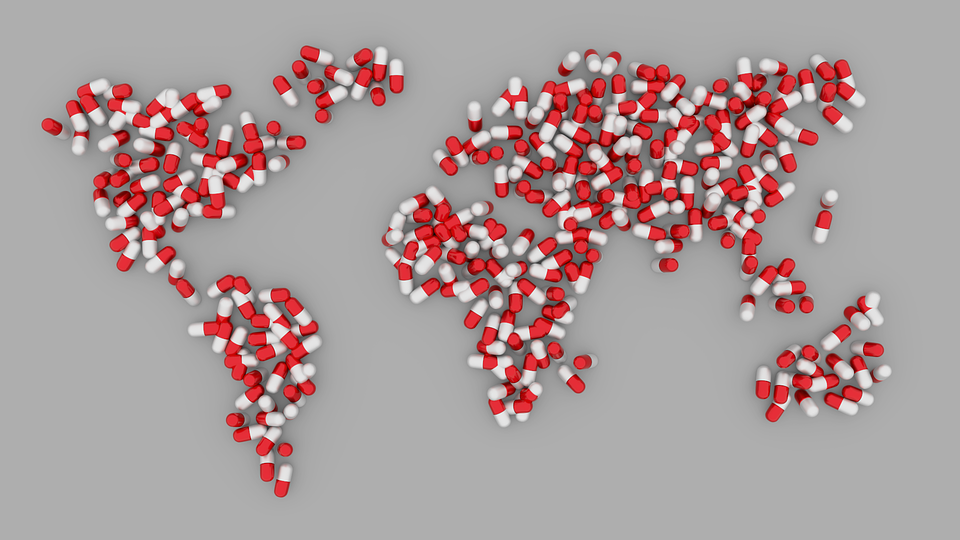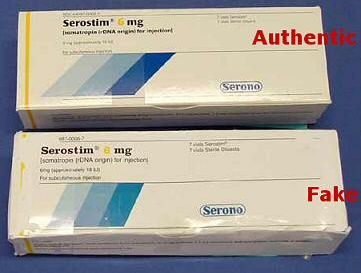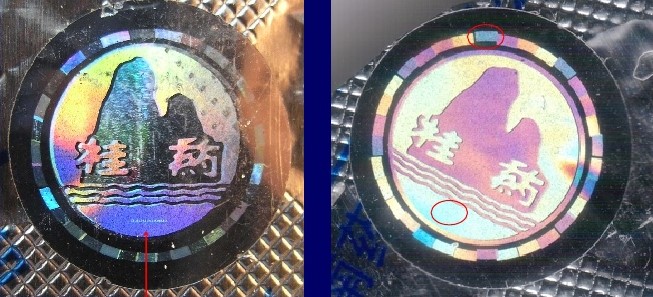Dissertation reflection: counterfeit drugs in Thailand
This blog was written by Dan Turley, a student on the intercalated BSc in Global Health at HCRI. Find out more information about the iBSc in Global Health here.
For my dissertation submitted to the HCRI for the Intercalated BSc in Global Health, I investigated the complex industry of counterfeit drugs. While I chose to focus on the situation in Thailand, a major player in the current market, I would like this blog post to raise awareness of this serious public health threat to the developing and developed world alike.
The Global Picture

“Perhaps no greater challenge exists today for public health and patient safety than that of counterfeit medications” (Mackey and Liang, 2013).
Counterfeit drugs are medications which contain a raised or reduced active pharmaceutical ingredient (API). At best they are ineffective, at worst they lead to drug resistant pathogens and directly cause morbidity and mortality. Such products affect developing countries more than developed countries but have been found in every major pharmaceutical category in every region of the world, found in places such as street markets, pharmacies, hospitals and on websites (WHO.int, 2018). However, have you ever heard of this vast global problem? If not, it may be surprising to learn that it is now estimated that as much as 10% of all pharmaceutical products worldwide are counterfeit. This estimate puts the annual value of criminal sales in the counterfeit drug industry at over US$75 billion in 2010 alone, and the annual death toll associated with their use at over one million (Mackay and Liang, 2011). Despite such estimates, the true scale of the problem in quantifiable terms remains unknown. The reasoning for this is that while it is widely accepted that the problem is growing, the clandestine nature of the industry makes it is impossible to know how much is undetected. Despite the recent strides in development that Thailand has made over the past twenty years, it has become a global centre for the production, packaging and distribution of counterfeit drugs (Kelly, 2018).
The 3A’s Model of Counterfeit Drugs
Counterfeit drugs become prevalent when there is an imbalance between supply and demand for good quality pharmaceutical products (Sugita and Miyakawa, 2010). This can be explained using 3A’s: Affordability, Availability and Acceptability (WHO, 2017). While my dissertation used the 3A’s model to explore the Thai pharmaceutical industry, it merely sets an example of how this model could be used to analyse the pharmaceutical industry on a more global scale.
Affordability
Due to their cheaper production cost, counterfeit drugs are often marketed at cheaper prices to their good quality alternatives, making them attractive to consumers. In the UK, the Pharmaceutical Price Regulation Scheme (Abpi.org.uk, 2018) operates to achieve a balance between fair pricing for both the NHS and its pharmaceutical manufacturers. However, no similar system is in place in Thailand (Sooksriwong et al, 2009). This is having particular effect on the proprietary drugs industry in the country (those still protected by a patent). The price of proprietary drugs is often high from the day of registration with the Thai FDA because there is no authority to ensure a fair price is set by pharmaceutical companies. Furthermore, because only one company has a licence to produce a patented drug, price reduction through competition is not possible. As a result many proprietary drugs are unaffordable to patients. Such demand for more affordable drugs is a window of opportunity for counterfeiters to get their products into the supply chain. But why are counterfeit drugs getting into the supply chain?
Availability
Supply chains in Thailand are still relatively underdeveloped and insecure. As evidenced by a case study in one of the largest public hospitals in the country, major issues with data standardisation and drug traceability have been commonplace to date (Kritchanchai and Suwandechochai, 2010). Drug manufacturers, distributors and healthcare providers within the same supply chain all use different coding practices (different types of barcodes, serial numbers etc.) to account for stock, which is equivalent to speaking different languages for the flow of data through the chain. The less secure the supply chain, the more available counterfeit drugs will be to consumers. Without common standards that would provide better supply chain security, counterfeiters will continue to produce products such as those in Figure 1 and 2, which are nearly impossible for a consumer to detect as counterfeit.

Figure 1: Serostrim (growth hormone) packaging copied to a high standard. Source: Information Technology for Developmental Research, 2018.

Figure 2: The hologram of a genuine Artesunate package (left) and a well copied counterfeit hologram (right). Source: Newton et al, 2006.
Acceptability
After the experience of recently going on a summer holiday to Thailand in the time between finishing my dissertation and writing this blog post (disclaimer: no medicines where consumed…), it seems the third A, ‘Acceptability’ of counterfeit goods, may be the most difficult problem to overcome. The power of branding and marketing has had an impact on the counterfeit drug trade, but to understand the nature of the influence of Thai culture in relation to the acceptability of counterfeit goods, one must look beyond the pharmaceutical industry.
Whether the issue is brand name clothing, computer software, automotive parts, or in this case, pharmaceutical products, issues around enforcement and non-compliance with Intellectual Property (IP) law in Thailand are endemic and globally renowned (Smith and Blois, 2010). It seems that counterfeiting has become “embedded” in popular Thai culture to the point that it regularly “imitates, imports, adapts and assimilates concepts and designs” as a social norm (Robinson and McDuie-Ra, 2018). While the consumption of counterfeit designer products may not have an impact on public health, there is no question that they have contributed to the scale of the current problem of counterfeit drugs in Thailand through the creation of an “embedded” counterfeit culture.
A Road Towards Countering the Counterfeits
Counterfeit drugs present an endemic threat to global public health that is unlikely to resolve itself as long as imbalances between supply and demand exist. The international community must therefore work together to maximise their respective strengths if real progress is to be made. The prospect of legislation that would introduce common standards for all companies, such as the introduction of Radio Frequency Identification Device (RFID) or Blockchain technology, are promising. Perhaps this is the future of supply chain security, as these would inevitably improve drug traceability throughout the supply chain. However, due to the high cost of their initial implementation, and lack of research on return of investment, such solutions have yet to be adequately endorsed by international pharmaceutical corporations. The model presented in my dissertation does not necessarily provide answers to this epidemic, but instead questions the accountability of pharmaceutical and governmental actors. Responsibility for patient safety must remain their top priority if this battle against counterfeit drugs is to be contained, controlled and ultimately won.
Bibliography
Abpi.org.uk. (2018). Pharmaceutical Price Regulation Scheme. [online] Available at: https://www.abpi.org.uk/what-we-do/pricing-regulation/pharmaceutical-price-regulation-scheme-pprs/ [Accessed 23 May 2018].
Information Technology For Development Research. (2018). Information Technology Solutions for Counterfeit Drugs. [online] Available at: https://itfordevelopmentresearch.wordpress.com/2012/04/10/information-technology-solutions-for-counterfeit-drugs/ [Accessed 20 Mar. 2018].
Kelly, E. (2018). Thailand’s Pharmaceutical Industry: An Update. The American Chamber of Commerce in Thailand, pp.1-2.
Kritchanchai, D., and Suwandechochai, R. (2010). Supply chain management in health sector in Thailand: A case study, International Journal of Services, Economics and Management 2(2), pp. 211 – 224.
Mackey, T.K. and Liang, B.A., 2011. The global counterfeit drug trade: patient safety and public health risks. Journal of pharmaceutical sciences, 100(11), pp.4571-4579.
Mackey, T.K. and Liang, B.A., 2013. Improving global health governance to combat counterfeit medicines: a proposal for a UNODC-WHO-Interpol trilateral mechanism. BMC medicine, 11(1), p.233.
Newton, P.N., Green, M.D., Fernández, F.M., Day, N.P. and White, N.J., 2006. Counterfeit anti-infective drugs. The Lancet infectious diseases, 6(9), pp.602-613 Smith, T. and Blois, K.,2010. Thailand’s Counterfeit Dilemma. Visionary Marketing for the 21st Century
Robinson, D.F. and McDuie‐Ra, D., 2018. (En) countering counterfeits in Bangkok: The urban spatial interlegalities of intellectual property law, enforcement and tolerance. The Geographical Journal, 184(1), pp.41-52.
Sooksriwong, C.O., Yoongthong, W., Suwattanapreeda, S. and Chanjaruporn, F., 2009. Medicine prices in Thailand: A result of no medicine pricing policy. Southern Med Review, 2(2).
Sugita, M. and Miyakawa, M., 2010. Economic analysis of use of counterfeit drugs: health impairment risk of counterfeit phosphodiesterase type 5 inhibitor taken as an example. Environmental health and preventive medicine, 15(4), p.244.
WHO, 2017. WHO Global Surveillance and Monitoring System for substandard and falsified medical products. Geneva: World Health Organization; 2017. Licence: CC BY-NC-SA 3.0 IGO.
World Health Organisation. (2018). Substandard and falsified medical products. [online] Available at: http://www.who.int/mediacentre/factsheets/fs275/en/ [Accessed 29 Mar. 2018].


0 Comments